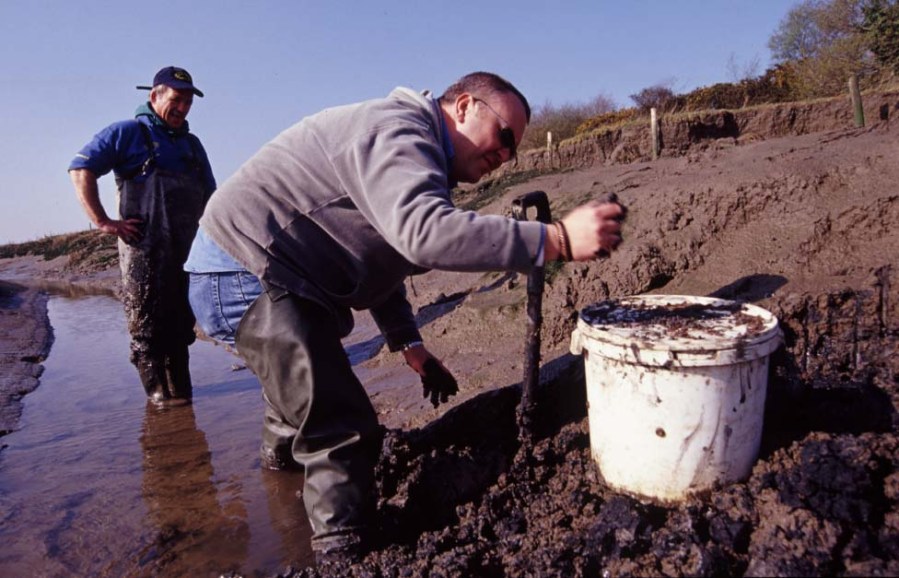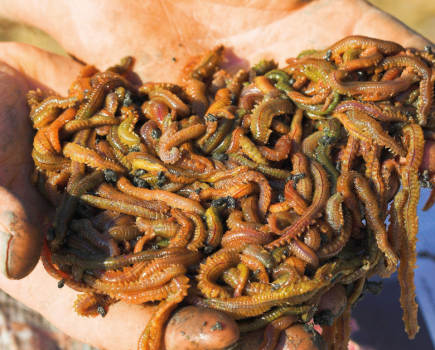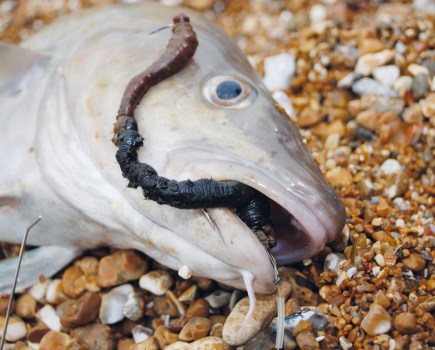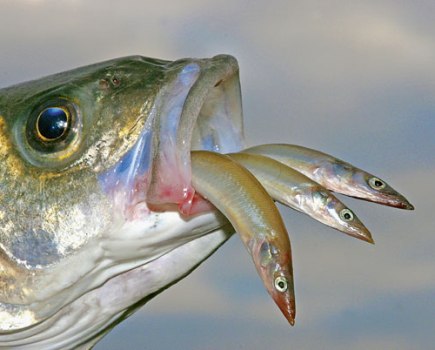When Dean Roderick wrote to Sea Angler magazine asking how to dig his own lugworms and ragworms for bait, they took him out to the beach to show him how it’s done…
Many sea anglers see digging their own bait as being the solution to help reduce the cost of a day’s fishing. They also know that once they get the hang of it, the bait on their hooks will be the best and freshest available.
But let’s get real. There’s more to do-it-yourself bait digging than simply turning over a patch of beach during low water.
After all, lurking just below the surface are vast colonies of wriggling ragworms and lugworms. Yeah, right!
Dean has been itching to get dug in, but was left scratching his head when he tried.
Lacking technique and knowledge his bait bucket didn’t over-flow.
With the frustration levels rising he wrote to us. We introduced him to Brian Davies, of Country Stores tackle shop in Gowerton, and a team of professional bait diggers.
Like many sea anglers Dean lives a fair distance from the coast, in his case at least an hours drive from the nearest viable bait beds, so straight away he was looking at both a time and fuel cost when planning a dig.
Dean wanted to learn how to dig lug and rag, which come from different types of ground, so Brian arranged for two top bait diggers to show him the ropes.
Danny Westacott has dug harbour ragworm – maddies or mudworm, as we call them in South Wales – all of his life and he agreed to reveal a few trade secrets on the famous Loughor estuary, one of the area’s best flounder venues.
The look on Dean’s face when he saw Danny standing up to his knees in the thick grey estuary mud, doubled over as he sifted through the glutinous mass with his fingers to extract the worms, said it all.
I could see he had serious doubts about the worm-hunting lesson, but it was too late to change his mind, so reluctantly he slipped and slid his way into the gully where Danny was working.

Getting stuck in…literally
DANNY explained that working a bank in a gully was the easiest way to dig for small harbour worms and he showed
Dean how to use a standard garden fork to carefully extract them. As he half dug, half levered each lump of muck away from the bank, the individual worms had to carefully manipulated out of the mass by hand. It’s a cold and messy procedure on a warm spring day, just imagine what it’s like in the wind and rain of winter?
In recent years our estuaries and beaches have got cleaner and healthier, and this has resulted in colonies of worms in many locations being seriously diminished. Sewer pipes used to pump untold quantities of filth into our seas, but they did provide the rich nutrients for the worms.
During the past couple of years both the number and size of worms in estuaries have been reduced, making it ever harder for professional diggers.
Even so Danny went to great lengths to explain to Dean the importance of only taking large worms and in returning all undersized worms unharmed.
There’s no point in digging the bed out just because the worms are there.
Country Stores is the only tackle shop I know that almost always has a supply in stock. Brian stores them in trays of peat kept in a fridge set at normal household fridge temperature. Harbour rag are delicate so it’s important to keep them as cool as possible during transport, especially in summer, so a cool box is ideal.
Safety is an issue when digging due to the dangers associated with working on inter-tidal mudflats. You should confirm the time of tides, gather local knowledge, make sure someone knows where you are and when you expect to return and don’t venture out on the mud alone.
After an hour of hard messy graft, during which time Dean collected enough sizeable worms for perhaps two or three casts, Danny made him backfill all the bank he had dug over. Covered from head to toe in filth, he may not be having any more battles in the mud, instead preferring pay the £17.50 per pound for his mud worms from now on.

Glutton for punishment
Next stop was a few miles down the estuary, where we met Martin Davis, another bait digger who has been working the area for more than 20 years.
Being closer to the sea the estuary consists of more sand than mud, with many large sandbanks exposed over the lowwater period. Making sure we wouldn’t be cut off by a rapidly flooding tide we set out sights on blow lug.
The carpet of casts told us there were plenty of worms about. Martin, wasn’t so impressed: “It’s hard work getting anything like the quantity needed.”
This could be due to a drop in air temperature, a change in air pressure or some other factor, but pickings were meagre. Martin explained that with such a high concentration of worms, trenching was the most effective way to dig.
“The patches of sand adjacent to the small streams that criss-cross the sandbanks produce the most worms,” said Martin, “but to prevent the trench from filling with water it is necessary to build a dam as you dig.
He used a potato fork with four flattened tines, which made lifting the sand easier, as he swiftly removed a fork full at a time, only stopping to throw worms into his bucket. Broken worms were discarded as their leaking body fluids kill the healthy ones. All small worms were left to grow fatter.
At the end of the session Martin washed the worms in clean seawater and transported them to the shop in a cool box. Worms must be kept cool and moist otherwise they will die. Back in the shop the worms are stored in trays evenly spaced on old newspaper that has been soaked in seawater. They are then covered by another layer of damp paper before being placed in a fridge.
Dean soon realised there was more to digging lug than simply forking over the sand. He got the knack and found a few worms, but it again became apparent that the £12 per pound Country Stores currently charge for lug is value for money.
Digging blow lug might not be as messy as mud worm but it is more physically demanding as you end up turning over far greater quantities of sand.

Off to use his new bait
Dean deserved a treat, so we took him to the classic Rhossili Bay surf beach with its clearly defined tables of calm water between the breaking lines of surf.
Mud worms are good here for flounders and mullet, so Dean used his own bait on size 4 Aberdeen hooks, bunching four or five squirming worms on at a time.
It wasn’t long before he was posing with the first of three lovely flounder, to which he added a bass before the end of the afternoon…and it was all his own








